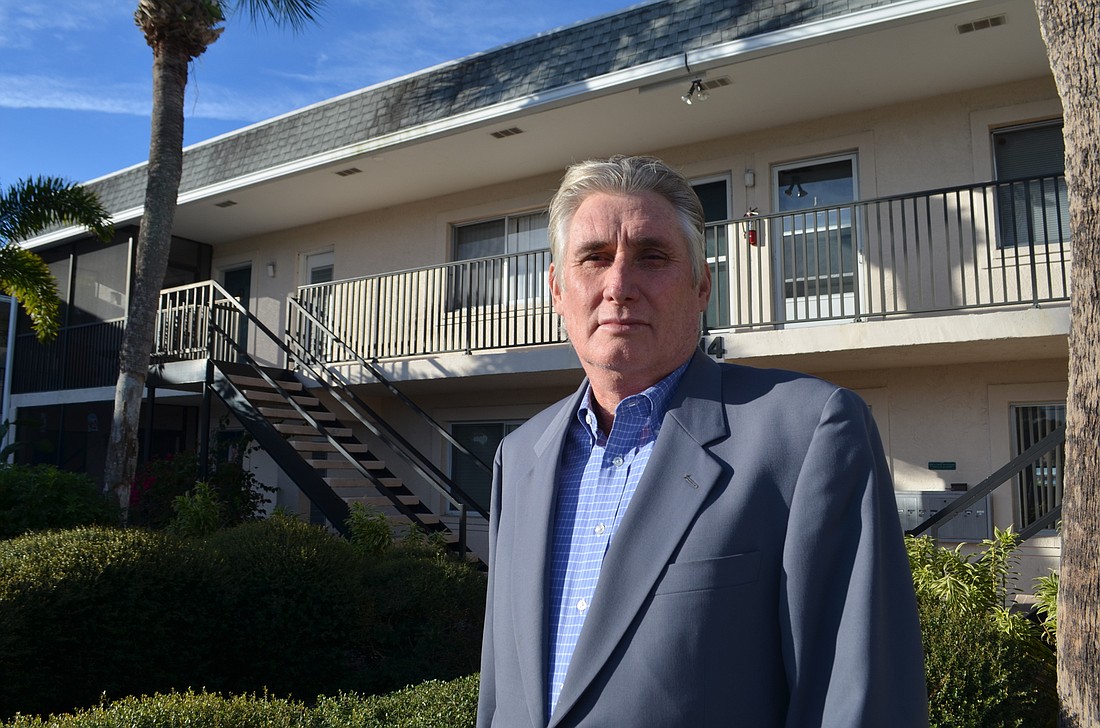- July 26, 2024
-
-
Loading

Loading

For two hours Monday evening, city commissioners met for the second time in two months to discuss policy solutions for a shortage of affordable housing in Sarasota.
The workshop, which featured input from representatives for housing developers, the Sarasota Housing Authority, the Coalition of City Neighborhood Associations and the Gulf Coast Community Foundation, focused on potential regulatory and incentive-based housing strategies. The conversation showcased the breadth of the affordable housing issue, touching on how to serve households making anywhere from 30% to 120% of the area median income — a range of $25,750 to $85,050 annually for a family of four.
Mayor Jen Ahearn-Koch and Commissioner Willie Shaw said they were interested in concentrating the city’s attention on developing housing that can serve low-income residents, which they saw as a more pressing need. William Russell, president and CEO of the Sarasota Housing Authority, said the low-income public housing agency often has to freeze its wait list for homes and vouchers because the demand is so great.
“You’re OK,” Shaw said to a developer discussing housing for households making between 80% and 120% of AMI. “I'm dealing with the ones at the lower end of the spectrum, where we have the greatest number.”
But planning staff said the city lacked sufficient housing even for residents earning above the median income in the region. Planning Director Steve Cover said a household at 120% of AMI wasn’t necessarily in a position to easily secure housing in Sarasota, noting two people each earning earned $16.38 per hour would hit that threshold. Planning General Manager Ryan Chapdelain said relying solely on market conditions has failed to guarantee housing for families above the lower-income bands the Sarasota Housing Authority serves.
“I think we can say there is a void for that 60% to 120%,” Chapdelain said. “We don’t really have many at all that we’re serving in terms of permanent affordability.”
Commissioner Shelli Freeland Eddie agreed the city needed to be mindful of narrowing the discussion too far, noting that external variables such as childcare and a lack of public benefits can complicate the financial situation of higher-earning families.
“We can mess up the good for the great,” Freeland Eddie said. “We can look at these percentages and say we want to stay really close to 100% and kick out the folks close to 120% and lose some great workers and mess up some synergy because we don’t know how numbers work in people's households.”
Jon Thaxton, senior vice president for community investment at the Gulf Coast Community Foundation, recommended creating a tiered incentive system that gave more benefits to builders providing affordable housing to lower-income segments of the community. Thaxton said those incentives could include higher density, expedited project review, reduced or waived fees and the donation of city-owned land.
Ahearn-Koch, who has previously advocated for limiting some affordable housing incentives to projects providing units for households earning below 100% of AMI, supported exploring that approach.
“Moving forward, that’s an excellent suggestion,” Ahearn-Koch said.
Toward the end of the conversation, Commissioner Hagen Brody said city officials should own some responsibility for creating the existing conditions in Sarasota. To arrive at effective strategies for producing more affordable housing, Brody indicated the commission should reflect on how previous policy decisions contributed to the shortage that exists today.
“Looking at other states and communities that deal with affordable housing, the ones I think are succeeding in this area are the ones that are acknowledging they have problems not only with their zoning code, but also with the approval processes and their culture that they create around these issues with the community,” Brody said. “We’re a big part of that problem.”
Lou Costa, president of the Coalition of City Neighborhood Associations, said he believed residents were willing to get behind effective strategies for providing affordable housing — but he said the city needed to work closely with neighborhoods during the planning process to get buy-in.
“What we have pretty much determined is there is not a one-size-fits-all that’s going to work,” Costa said. “Each neighborhood is going to be different.”
Although Brody said he did not want to make changes within predominantly single-family areas, he also said the city would have to be ready to move forward with policies that might not generate unanimous support to effectively address housing-related issues.
“The tools don’t mean anything unless we embrace some of the uncomfortableness that comes with them,” Brody said. “Increasing density is going to have pushback. There are going to be people afraid of additional traffic. But we know it’s necessary.”